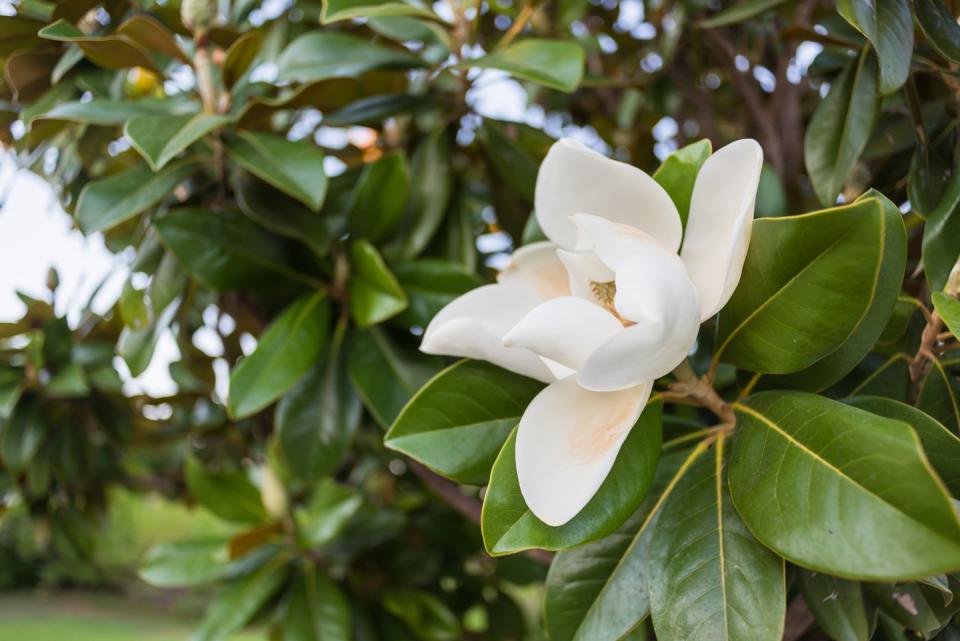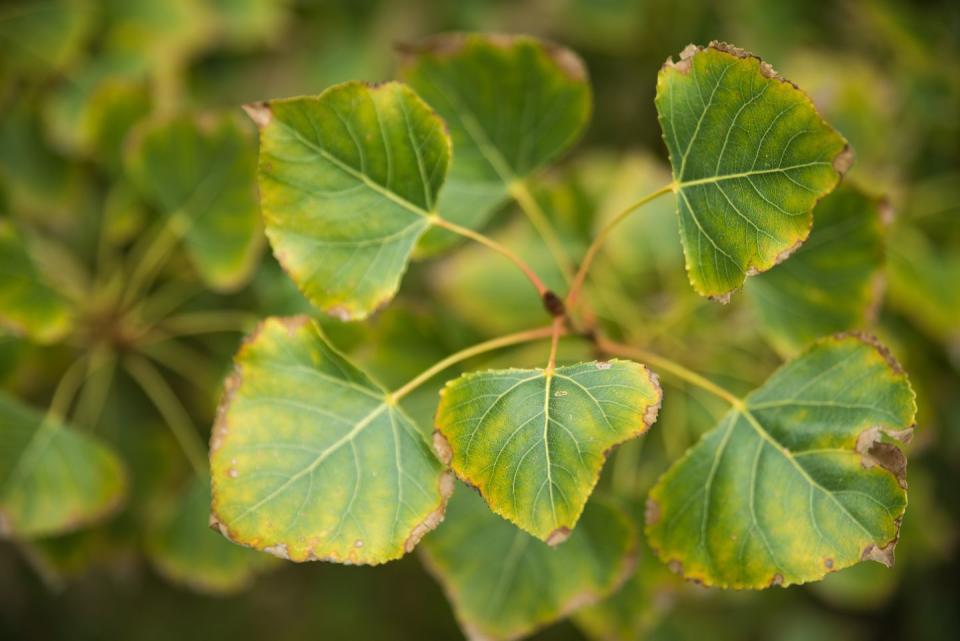7 trees and plants with the most invasive roots

Invasive tree roots are a common problem for many homeowners. If left unattended, aggressive roots will cause disruption to pavements, buildings and patio slabs.
From fast-growing Japanese knotweed to the classic willow tree, there are many plants and trees to avoid planting in your garden if you are concerned about their roots. "Most trees and plants look impressive above ground, but underneath they could be causing havoc," a spokesperson for BillyOh explains.
"Take the humble mint herb for example, it's easy to grow and makes a great addition to many dishes, but its roots are seriously invasive and can spread throughout your garden in a weed-like manner if not contained.
"Similarly, thanks to the magnolia's crowded under-soil space the roots occupy and the dense canopy of magnolia leaves, it's almost impossible for any other plantings to thrive near it."
Take a look at the invasive trees and plants below...
1. Silver maple tree

Silver maple trees have incredibly shallow, fast-growing roots. They might be prized for their vibrant colour in autumn, but their root systems are one of the most invasive of all. As the roots enlarge, silver maple trees have been known to crack driveways, pavements, foundations and pipes. It's best to avoid planting this tree altogether.
2. Southern magnolia

The common magnolia tree, also known as Southern magnolia, can grow impressively large. Many of them are far too big for the average garden, meaning that their knotty roots can spread out viciously. Often, because of crowded under-soil space, these leave no room for other plants to thrive.
3. Willow trees

In some urban areas, willow tree roots have been known to spread up to 40 metres wide, causing havoc to pavements, drains and roads. While they're incredibly eye-catching in spring, their aggressive roots mean they're not the best option for smaller gardens. Some of the worst species of willow to avoid include weeping, corkscrew and Austree willows.
4. Hybrid poplar trees

Hybrid poplar trees have a well-developed root system and are known for growing to large sizes. Their shallow, invasive roots often don't survive longer than 15 years. They grow long and straight, meaning that they rely on the strength of their root system to hold them up. If you're planning your garden scheme, it's best to avoid these.
5. Mint
A kitchen windowsill favourite, mint is a practical and great-smelling herb to grow yourself. However, if it isn't maintained properly it can grow invasively outside, so these are best planted in small pots. Trim them regularly to keep the plant looking healthy (you can pop them in a freezer to preserve the longevity of their leaves).
6. Sycamore trees

This large deciduous tree is beautiful in its appearance, but has an aggressive root system. As well as growing to enormous heights, their leaves fall at a rapid pace, falling far quicker than you can begin to clean up. Their roots have also been known to crack pavements.
7. Japanese knotweed

Japanese knotweed is an incredibly invasive plant. Difficult to remove and dangerous when it spreads, the weed has been listed by the World Conservation Union as one of the world's worst invasive species. In severe cases, some UK homeowners have struggled to sell their homes because of evidence of the weed in their garden. For more information on how to tackle Japanese knotweed professionally, head over to the government's help page.
Like this article? Sign up to our newsletter to get more articles like this delivered straight to your inbox.
You Might Also Like

